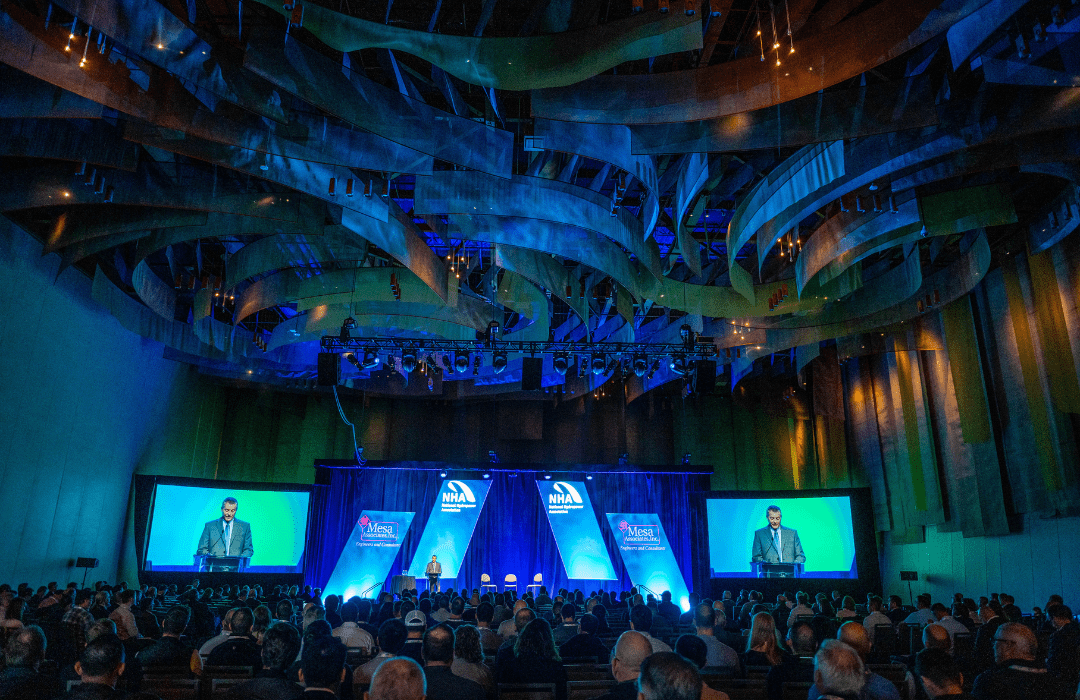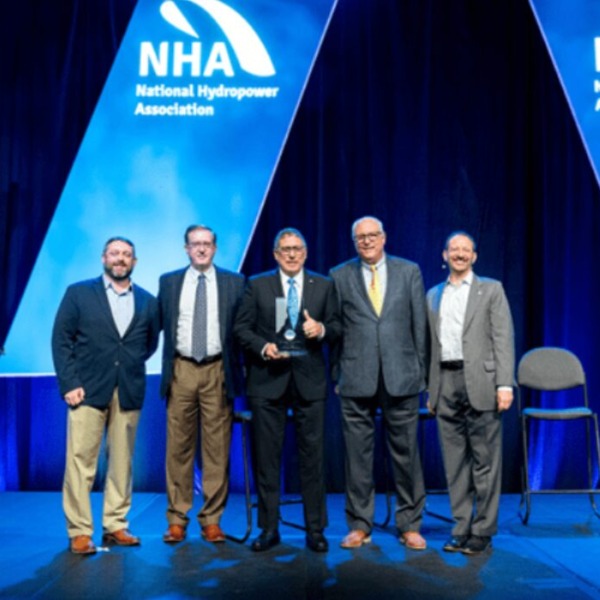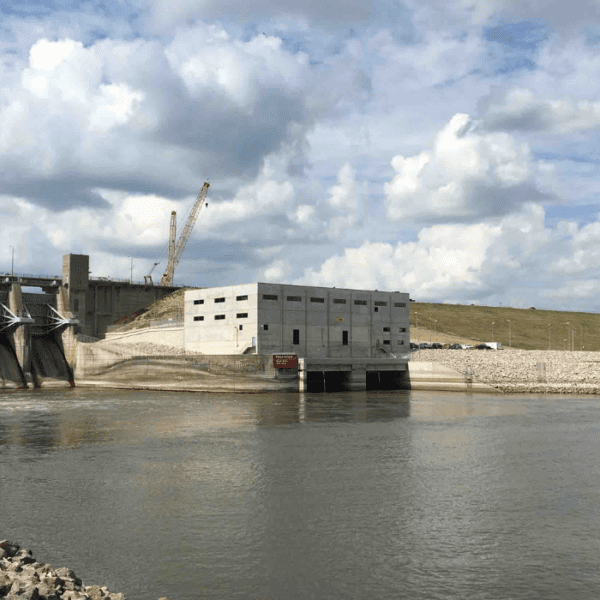The Clean Currents 2023 Conference + Trade Show, held the week of October 9 in Cincinnati, Ohio, was a homecoming for the water power industry. With attendees, exhibitors, and speakers joining from around the world, the full breadth of the industry’s knowledge was on display.
During this “by the industry, for the industry” annual event, hydro project owners and developers, service and product suppliers, government agency officials, non-government organizations, and other stakeholders connected in workshops, during organizational meetings, on hydro plant tours, in CC Central, and during networking events.
From conversations throughout the event, the National Hydropower Association (NHA), owner and organizer of Clean Currents, offers observations about four trends emerging from the week:
- Celebrating Historic Federal Investments
- Living Our Commitment as Stewards of the Water
- Adding Power at Existing Infrastructure
- In Pursuit of Pumped Storage
CELEBRATING HISTORIC FEDERAL INVESTMENTS
The recent infusion of federal dollars into hydropower loomed large over the dialogue at Clean Currents, particularly from Department of Energy representatives in attendance. On Thursday, October 12, Jennifer Garson, Director of the Water Power Technologies Office at the U.S. Department of Energy (DOE), proudly announced the agency’s intent to allocate $9.5 million to strengthen hydropower flexibility in support of grids increasingly powered by wind and solar. This came directly after big news earlier in the week from DOE that 66 hydropower facilities throughout the U.S. will receive more than $38 million in incentive payments for electricity generated and sold.
To see the full list of 66 facilities, click HERE.
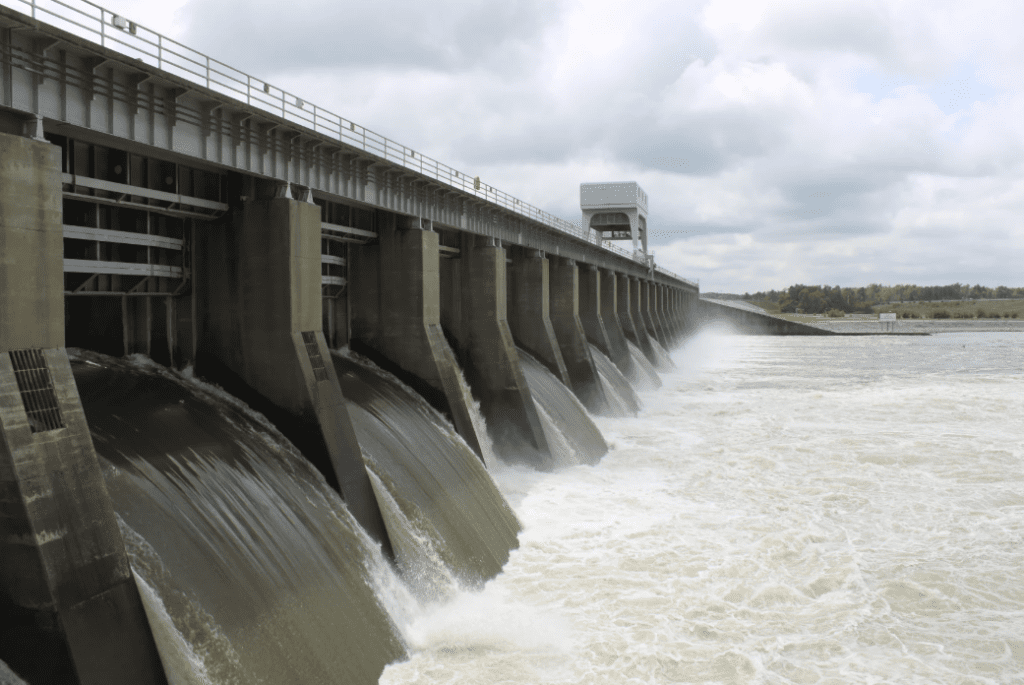
Willow Island in West Virginia – one of the 66 recipients of DOE’s $38 million for hydropower.
Along with record investments in hydro to the tune of $775 million from the Bipartisan Infrastructure Law, it’s clear that the industry is beginning to receive the support it deserves from leaders in the Nation’s Capital. Clean Currents set out to empower attendees to learn about federal funding opportunities and how to navigate the complex grant process through special sessions dedicated to these topics. At the same time, this enthusiasm was tempered by the recent dysfunction in Washington – including last month’s shutdown threat and the leadership vacuum in the House of Representatives, which threatens to stall this positive momentum.
In May, the U.S. Army Corps of Engineers (USACE) moved ahead with the Corps Water Infrastructure Financing Program (CWIFP), which allowed the USACE to formally seek applicants to deploy an estimated $7.5 billion loan capacity, supporting approximately $15 billion in critical dam safety projects. With extremely favorable terms for borrowers, as well as wide-ranging applicability for enhancements and upgrades, the USACE program outlines the significance, and scope, of this work.
Living Our Commitment as Stewards of the Water
Water power’s benefits go beyond the power it provides; it enables infrastructure and transportation, provides recreation and greenspace, serves as a marker of history, and much more. That’s why Clean Currents made ample time for attendees to get away from the bustling convention center and explore many nearby landmarks based around local rivers and hydro facilities in both Ohio and Kentucky.
On Monday (October 9), the day before Clean Currents officially kicked off, participants who arrived early embarked on a 50-mile bike ride down a meandering, verdant trail that hugged the Little Miami River, welcoming all kinds of folks searching for recreation and providing a beautiful backdrop for the burgeoning fall color.
Back in Cincinnati, this bike ride was followed by a river clean-up, organized by Ohio River Valley Water Sanitation Commission (ORANSCO), of a stretch of the Ohio River.
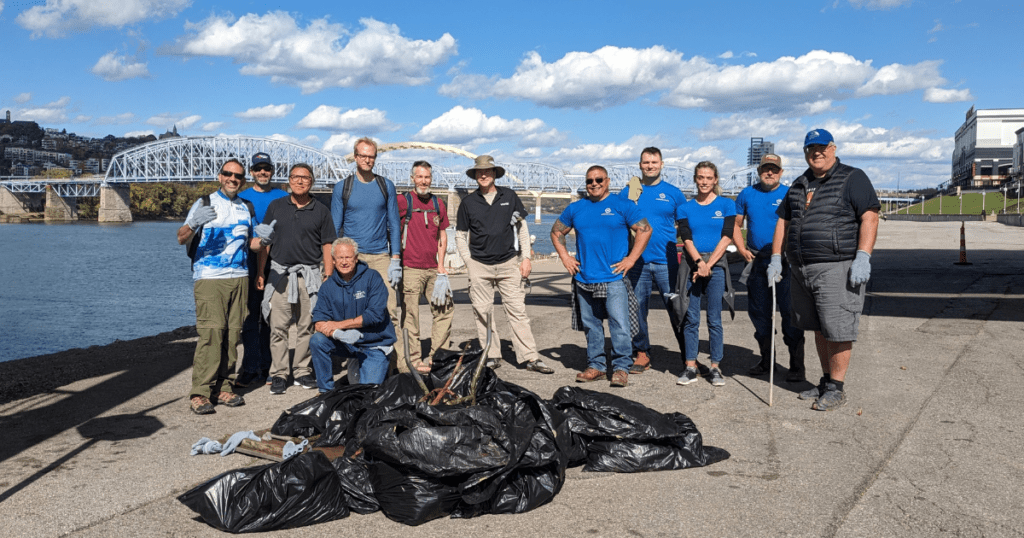
River sweep volunteers pose for a photo alongside the Ohio River.
Later in the week, attendees toured the nearby Meldahl and Markland dams, learning about the facilities’ energy output and ancillary benefits, and toured the hydro history landmarks of Hamilton, Ohio, which included a water powered plant operated by noted hydro enthusiast, Henry Ford, as well as a look at the area’s indigenous history, current hydroelectric operations, and more.
At the convention center, the Hydro Heritage Center exhibit encouraged attendees to learn more about the hydropower industry’s remarkable legacy across America.
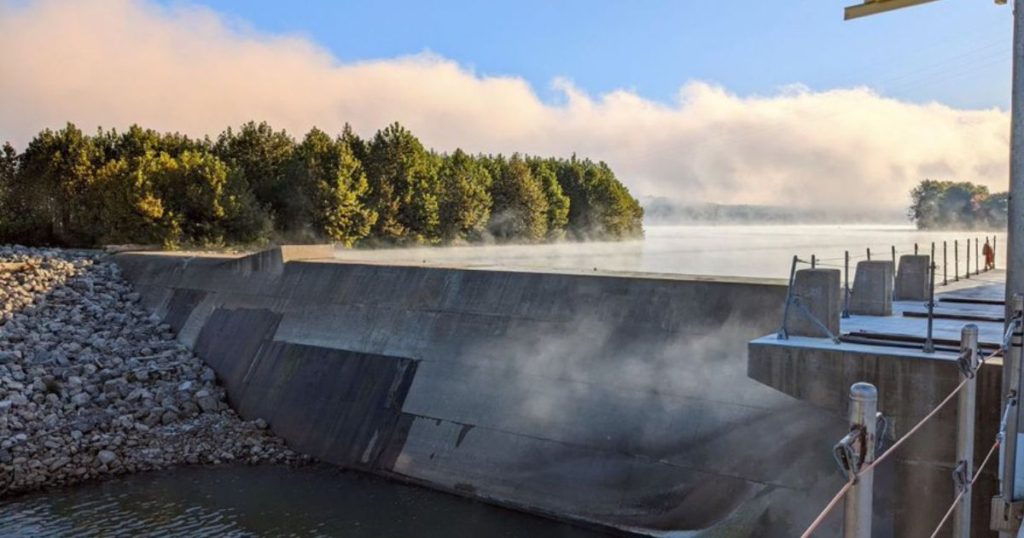
Foggy morning in Foster, Kentucky, site of the Meldahl Hydro Project.
Building a Bigger Table
America’s water power industry should be as diverse as the communities it serves, with a wide array of stakeholders claiming their rightful place as leaders in our community. This year’s Clean Currents sought to make progress on that goal in a number of ways.
It’s no secret that the hydro community needs to invest more in young people, who will not only inherit the water power industry, but increasingly complex global energy and climate challenges. Due to the hard work of The Hydropower Foundation, Department of Energy, and National Renewable Energy Laboratory, the 2023 Clean Currents students and young professionals featured prominently at the event.
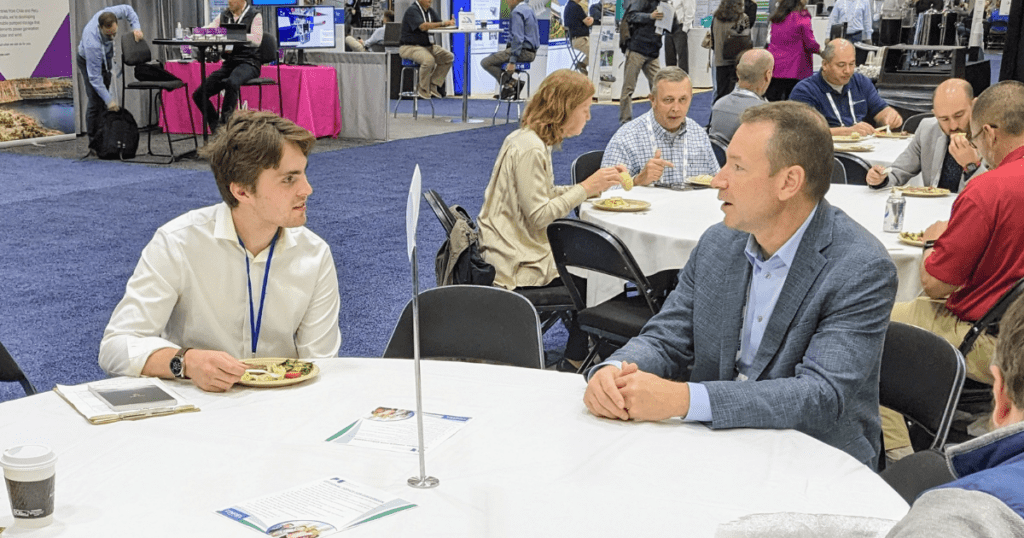
Two Clean Currents’ attendees talk during a student/industry networking lunch.
Representatives of the NEED (National Energy Education Development) Program also held sessions at Clean Currents, where local educators learned and implemented interactive lesson-plans about hydropower for their students.
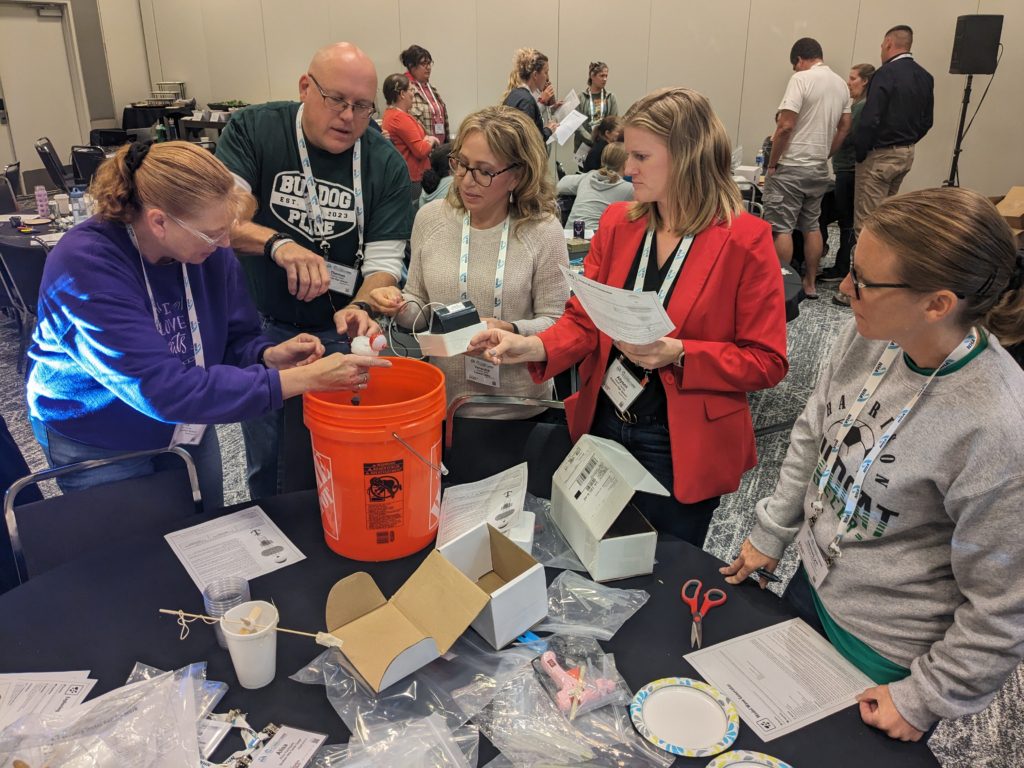
Teachers from the Ohio and Kentucky area learn how to implement hydropower lesson plans as part of a NEED session at Clean Currents.
In addition, NHA is working to help empower indigenous voices, facilitating ongoing conversation with tribes and hydropower stakeholders, as well as holding sessions at national events to inform attendees about how to work and communicate with tribal partners. This year, Clean Currents was honored to provide a session, led by Indigenous Treaty Partners, focused on educating participants about indigenous cultures and building bridges between Indigenous and non-Indigenous communities.
This programming complements NHA’s “Uncommon Dialogue,” which is an ongoing series of conversations and partnerships spanning the water power industry, environmental non-profits, and tribal groups. The Uncommon Dialogue, which had a panel as part of the October 12 plenary session at Clean Currents, received $3.7 million in funding from the DOE earlier this year to deepen relationships and trust between hydropower and river stakeholders.
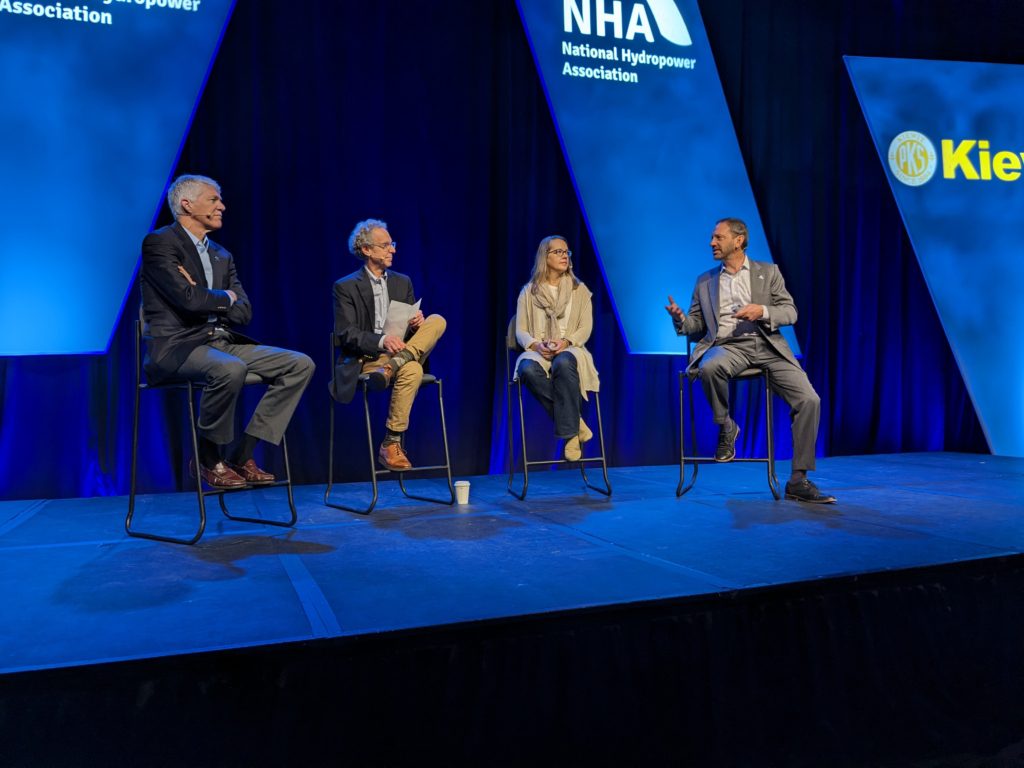
The Uncommon Dialogue panel at the Wednesday, October 11, 2023, Plenary Session.
ADDING POWER AT EXISTING INFRASTRUCTURE
Addressing the world’s climate challenges requires tapping into nuanced means of energy production, including powering non-powered dams. With over 91,000 dams in the United States, only a small fraction of those are equipped with hydropower generating capacity.
The two poster sessions (“Leveraging Non-Powered Dams for Hydropower Generation: A Multi-Criteria Decision Framework for Site-Level Analysis” and “Cataloging and Quantifying Additional Value Streams from Non-Powered Dam Conversion”) drew in attendees, demonstrating the growing interest in pursuing and systematizing the critical work of ensuring our renewable future.
Adding power to non-powered dams is also a key feature in “The Community and Hydropower Improvement Act,” bipartisan legislation proposed by Senators Steve Daines (R-MT) and Maria Cantwell (D-WA), which seeks, amongst other items top-of-mind for the water power industry, to establish a two-year process to grant licensing for adding hydropower to qualifying non-powered dams.
With 1,600 registrants, including representatives from the Department of Energy, national labs, and USACE, Clean Currents helped facilitate the continuing conversation around reimagining U.S. infrastructure as part of both a clean energy solution and a means of ensuring, as well as funding, important dam safety investments.
IN PURSUIT OF PUMPED STORAGE
Signs of pumped storage hydropower’s growing popularity is evident everywhere you look. At Clean Currents 2023, on the first day of the multi-day conference, the Pumped Storage Forum was standing room only. With attendees lining the walls, sleeves were rolled up, and folks dove into the details pertaining to pumped storage updates, questions, and challenges.
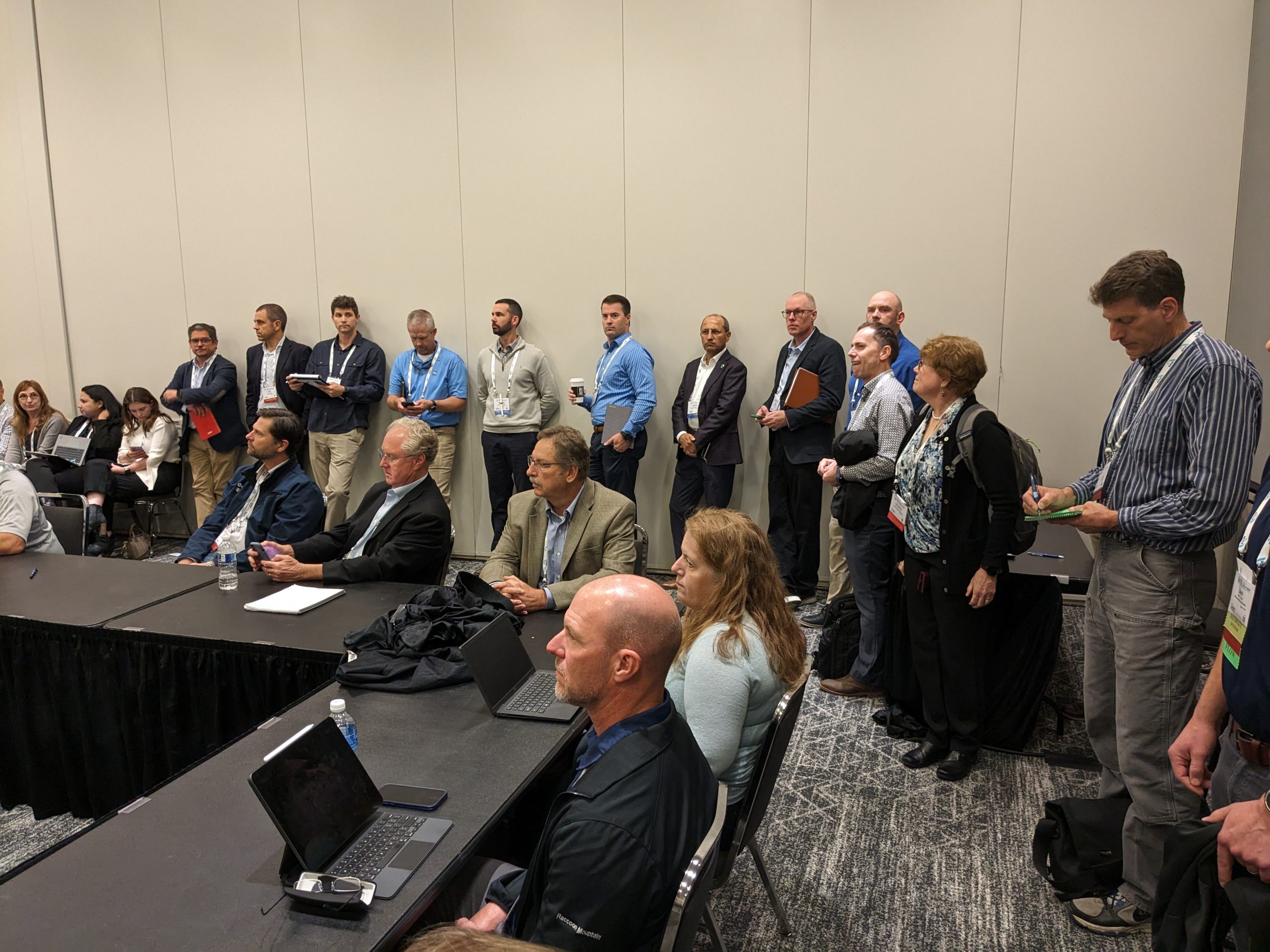
Standing room only at the Pumped Storage Hydropower forum at Clean Currents.
Long-duration energy storage has become central to conversations about enabling the renewable grid, as intermittent renewables like wind and solar are best braced by clean energy like hydropower and pumped storage, which both have the capacity to restart the grid in the event of a blackout.
Closed-loop pumped storage, which was the focus of a recent study by National Renewable Energy Laboratory, was determined to have the lowest potential to add to global warming, making it ideal to compliment the developments needed to reach the Biden Administration’s goal of 100% carbon-pollution free electricity by 2030.
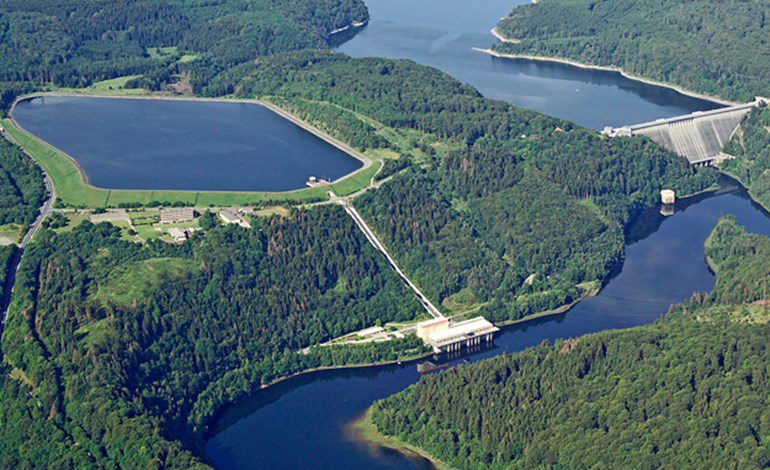
Clean Currents, which played host to important information exchanges and dialogue around the long-duration technology, covered everything from “Pumped Storage Development and Construction” to “Pumped Storage – Contributions to the Energy Transition,” furthering necessary conversation about how to ensure these important projects can move forward in a timely manner.
While the clean energy proposition pumped storage provides is not new to the water power industry, ongoing legislative efforts like “The Community and Hydropower Improvement Act” seeks to streamline the hydropower permitting and licensing process. By supporting “The Community and Hydropower Improvement Act,” Clean Currents attendees, and the organizations they represent, can leverage information gained at the conference + tradeshow to speak with representatives about the critical role pumped storage plays in our renewable future.



